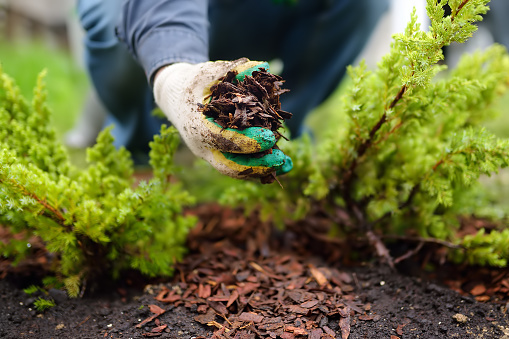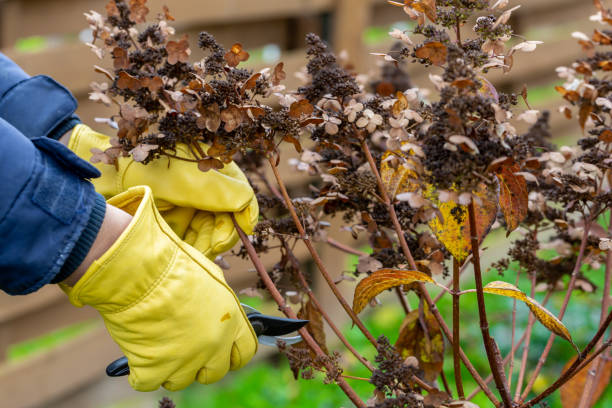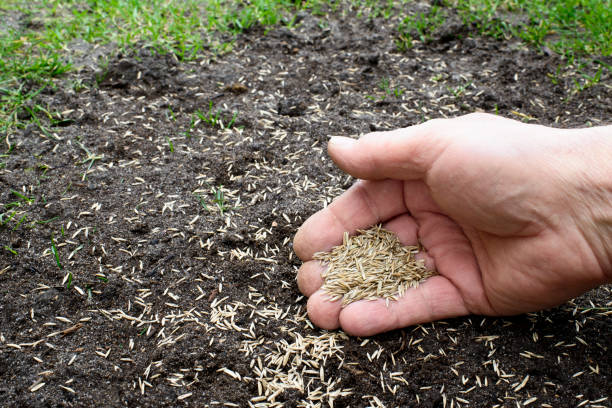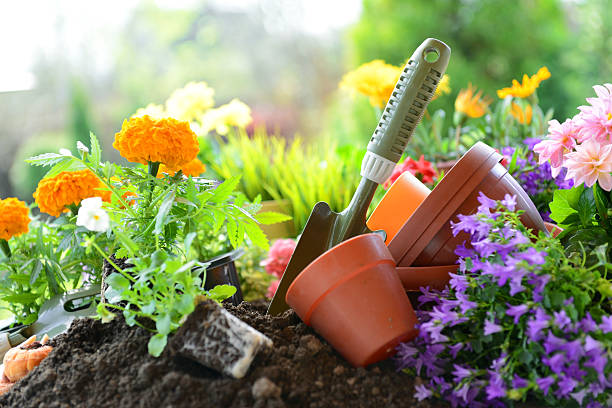
Green-fingered advice from Love Plants....
March isn’t exactly renowned for its warm and balmy days. However, with daylight hours lengthening and the sun just beginning to warm things up in the garden, it is the perfect time to give your garden some much needed love and attention.
Here’s our garden tips for spring.
Cleaning and tidying up is the first step to getting your garden spring ready. Beds and borders can be cleared of fallen leaves and plant debris and dead growth on herbaceous perennials and deciduous grasses can be trimmed back now. Unless you particularly wish to manage your garden for the benefit of wildlife, then this job can be left until a little later in the spring.
Clear your beds back down to bare soil and remove any weeds that have sprouted over winter. Once the beds have been cleared you can give your plants a real boost by mulching in between your plants with a good quality, well rotted, farmyard manure, soil improver, compost or bark chips. Doing this will help to keep weeds at bay and a good layer of mulch can help conserve moisture in the soil throughout drier periods, reducing the need for watering.

Bark mulch over bare soil
Now is your last opportunity to give Apples, Pears and Quince a winter prune. This job should be completed while the trees are still dormant and before new spring growth appears.
Roses, Buddleia, Lavender, Dogwoods, Willow and Hydrangea can be pruned back now to promote new stem growth and flower production and to keep shrubs in good shape.

Hydrangea pruning
Herbaceous perennials can be lifted and divided to provide more plants for your garden. Most clump forming, herbaceous plants will benefit greatly from division and replanting such as hardy Geranium, Hosta, Sedum and ornamental grasses. Dividing will ensure continued vigorous growth of your plant and is an easy opportunity to multiply your plants in the garden.
Herbaceous perennial division
Whenever the ground is not frozen you can take the opportunity to dig up and move any trees, shrubs and herbaceous perennials that are not in the right place. Dig a circular trench around the plant, taking as much of the root ball as possible. Trees and shrubs should be replanted as soon as possible after lifting to prevent the roots from drying out. Make sure that you replant at the same soil depth that the plant was growing in prior to lifting. Water in well.
Just before new growth springs into action, it is worth taking the time to inspect the general health of your plants and hunt down any overwintering pests. Slugs, snails and aphids like to hide among leaf litter and in the crown of plants. Empty any pots of left over bedding plants and check for evidence of Vine Weevil larvae that live in the compost, feasting on tender plant roots. Destroy any larvae that you find and consider using parasitic nematodes to control Vine Weevil numbers later in the year. Give pots a good wash ready for replanting with summer bulbs and bedding plants.

Vine Weevil larvae
Start sowing seeds. Some seeds can now be sown directly into the soil in the garden. Prepare the area first by removing any unwanted weeds and forking over the soil to loosen it a little. Seed can then be directly sown where you want it to grow. Using polythene or cloches prior to sowing your seed, will give the soil a head start warming up, making germination more successful. Other vegetable and fruit seeds can be sown with some added protection from the elements using a greenhouse, cold frame, propagator or warm sunny windowsill.
Early spring often heralds the first lawn mowing of the year. Set your mower blades on a high setting to start with, gradually lowering the height of the cut of your grass as the season warms up. Now is the ideal time to check your lawn for any bare patches and to reseed with some good quality grass seed. Once your lawn is visibly growing you can apply a feed to keep your grass lush and resistant to the extra wear it will receive over the summer months. Many products come as a ‘feed & weed’ combination, giving your grass a much needed boost while dealing with pesky annual and perennial weeds that have found their way into your lawn.

Grass seed sowing/patching bare patches
Preparing your garden tools for the year ahead will ensure you are fully kitted out and ready for whatever jobs you need to tackle. Check over all of your tools, brushing off any dried on dirt and garden debris with a stiff brush. Fill a bucket with warm soapy water and pop your smaller hand tools in for a soak. Rinse spades, forks and edging tools with clean water. Once your tools are clean and free of dirt you can inspect for rust and brush off any areas of rust developing with a wire brush. Secateurs, shears and loppers should have their blades sharpened and wiped down with some oil. Moving parts will also benefit from a drop of oil to keep your tools working smoothly. Coconut or vegetable oil is an acceptable alternative to WD-40 if there are concerns over the environmental impact of using petroleum based lubricants.
Empty the greenhouse of plants, pots, compost and tools. Give your greenhouse a good sweep or vacuum to get rid of dust and cobwebs. Slugs, aphids and spider mite all love to overwinter in the cosy protection of a greenhouse so it’s time to get scrubbing to clear the decks of dirt, pests and mildew. Clean all the windows to allow as much light as possible into your grow area and scrub all surfaces with a mild soap solution. Throw open the doors and ventilate the greenhouse well before putting plants back in.
Continue planting in the garden. Fill gaps in beds and borders with colourful hardy perennials, shrubs and trees. Sow hardy annual flower seeds such as calendula. nigella, larkspur and poppies and plant summer flowering bulbs for a great show, later in the year.

For more tips on how you can keep your garden looking great all year, read more of our Garden Guides.
My husband and I run thebestof Shrewsbury. We have over 40 years' combined marketing experience (scary) to help businesses grow. Thebestof Shrewsbury promotes local businesses through our high-traffic...
The following Cookies are used on this Site. Users who allow all the Cookies will enjoy the best experience and all functionality on the Site will be available to you.
You can choose to disable any of the Cookies by un-ticking the box below but if you do so your experience with the Site is likely to be diminished.
In order to interact with this site.
To help us to measure how users interact with content and pages on the Site so we can make
things better.
To show content from Google Maps.
To show content from YouTube.
To show content from Vimeo.
To share content across multiple platforms.
To view and book events.
To show user avatars and twitter feeds.
To show content from TourMkr.
To interact with Facebook.
To show content from WalkInto.